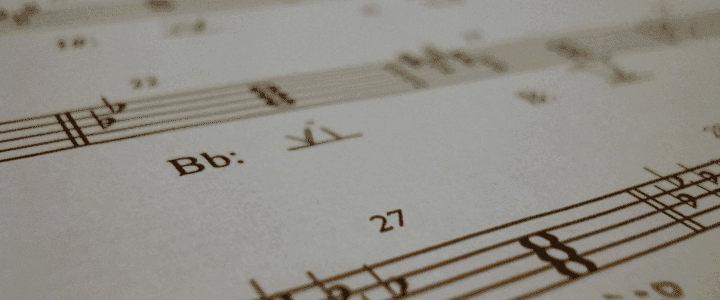
Music is all around us. It can make you smile, cry or laugh. It inspires us and relaxes us. But what exactly is it about music that gives it such powerful emotional effects? Why do we respond the way we do?
Key Characteristics
While it is clear music does affect us emotionally, even with years of scientific research it still isn’t clear exactly why it does. However, many theoretical studies have suggested that the key of a song plays a determining factor, often assigning certain emotional characteristics to different keys.
Here is a look at a few of the “key characteristics” dating from the 18th and early 19th centuries:
C major – completely pure, innocence, simplicity
C minor – obscure and sad
D flat major – a leering key, degenerating into grief and rapture
D major – joyous and very warlike
D minor – melancholy, serious and pious
E flat major – the key of love, devotion
As a rule, it was believed that music in the key of C sounds strong, simple and pure. The key of G, which has one sharp, sounds brighter and lighter. D major with two sharps, even more so. Each additional sharp in the key signature adds more brightness and sparkle to the sound, while each flat contributes softness, pensiveness and even melancholy. Also as a general rule, major keys sound happy, light, and regal; the minor keys are typically sad, dark and introspective.
In the 17th century, Athanasius Kircher developed a system of colors associated with musical intervals and then tied them to emotions. For example, a major sixth was seen as both fire red and warlike. This colored hearing is known as synesthesia. 19th century composer Alexander Scriabin also claimed to see music as colors.
Tempo and Emotion
Another aspect used in conjunction with key signature to evoke emotion in the listener is the tempo or speed that the music is played. Fast music usually sounds happy, while slower tempos tend to sound sad or melancholy. By combining tempo and key characteristics, composers can produce a strong emotional response for listeners.
Many of these general rules have stood the test of time. The original key characteristics were developed in the Baroque and Romantic periods, when chamber and orchestral music was mostly instrumental. It was important for a composer to be well-versed in these emotional associations of key signature and tempo in order to convey the emotional intent of their work.
Even the body has its own rhythm. We breathe at a certain tempo when we’re relaxed. We breathe faster when we’re scared or angry. Our heart beats faster or slower based on our emotional state. Composers have tapped into these biological functions to evoke physical responses from listeners.
Modern Music and Emotion
Today, we have the benefit of video to enhance how music affects emotions, by tying visual images directly to the music. Modern lyric writing makes expressing emotion much more direct, as well. But that doesn’t mean that you can’t learn from the past. As a composer, no matter what your style of music, you can take these key and tempo characteristics and apply them to your music.
The concepts of key characteristics and tempo have even been brought into the computer age. Companies like The Echo Nest use complex computer algorithms to analyze hit songs from the past for characteristics such as key signature, tempo, and chord progressions to determine what common traits make a hit. As a composer, you can do this too. Study the past. Do some basic research on key characteristics and use what you learn in your own music.
As a musician, the greatest goal you can have is to touch your listener on an emotional level. Learning and understanding how music affects emotions will make you a better composer and performer.
Photo by Surat Lozowick
Shanika

